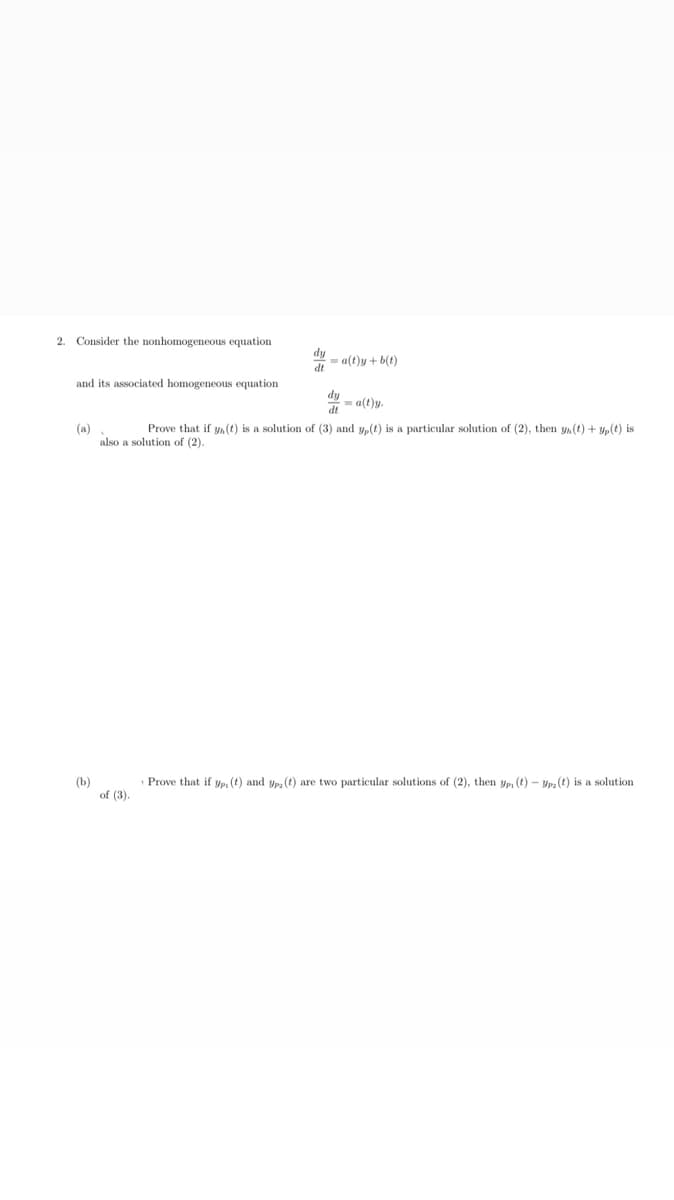2. Consider the nonhomogeneous equation = a(t)y+b(t) and its associated homogeneous equation a(t)y. dt (a) Prove that if y(t) is a solution of (3) and yp(t) is a particular solution of (2), then y(t) + Up (t) is also a solution of (2). Prove that if yp, (t) and yp, (t) are two particular solutions of (2), then yp, (t)- yp. (t) is a solution of (3). dt
2. Consider the nonhomogeneous equation = a(t)y+b(t) and its associated homogeneous equation a(t)y. dt (a) Prove that if y(t) is a solution of (3) and yp(t) is a particular solution of (2), then y(t) + Up (t) is also a solution of (2). Prove that if yp, (t) and yp, (t) are two particular solutions of (2), then yp, (t)- yp. (t) is a solution of (3). dt
Linear Algebra: A Modern Introduction
4th Edition
ISBN:9781285463247
Author:David Poole
Publisher:David Poole
Chapter4: Eigenvalues And Eigenvectors
Section4.6: Applications And The Perron-frobenius Theorem
Problem 69EQ: Let x=x(t) be a twice-differentiable function and consider the second order differential equation...
Related questions
Question

Transcribed Image Text:2. Consider the nonhomogeneous equation
= a(t)y + b(t)
and its associated homogeneous equation
dy
= a(t)y.
dt
(a)
Prove that if y(t) is a solution of (3) and y,(t) is a particular solution of (2), then y(t) + y(t) is
also a solution of (2).
(b)
Prove that if yp, (t) and yp, (t) are two particular solutions of (2), then yp, (t)- yp2 (t) is a solution
of (3).
dt
Expert Solution
This question has been solved!
Explore an expertly crafted, step-by-step solution for a thorough understanding of key concepts.
Step by step
Solved in 3 steps with 3 images

Recommended textbooks for you

Linear Algebra: A Modern Introduction
Algebra
ISBN:
9781285463247
Author:
David Poole
Publisher:
Cengage Learning

Linear Algebra: A Modern Introduction
Algebra
ISBN:
9781285463247
Author:
David Poole
Publisher:
Cengage Learning